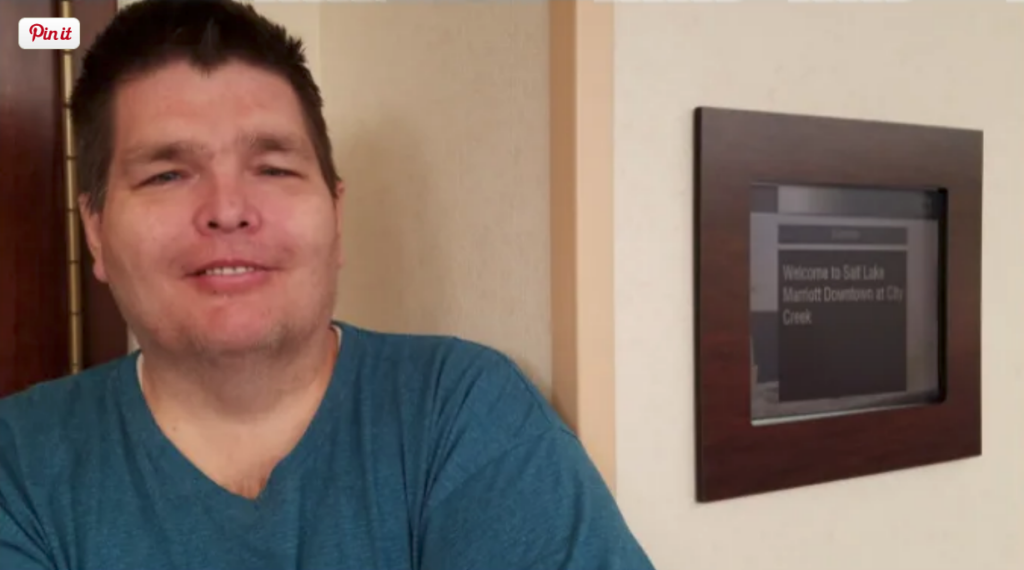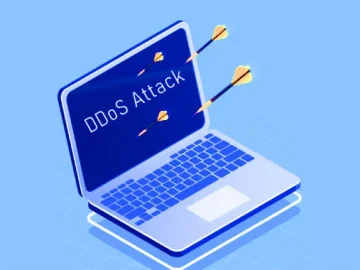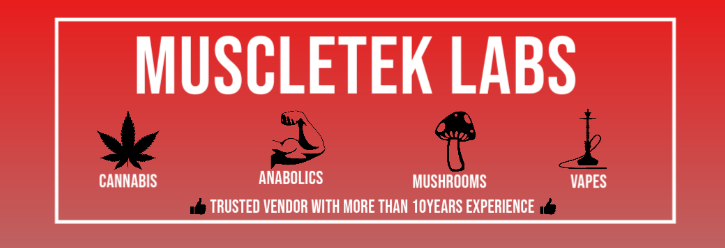Investigating The Staged Assassinations Of Silk Road
This article was originally published on Medium in March 2020.
Staged assassinations perpetrated by federal agents were key to the demise of the Silk Road darknet marketplace, a critical Bitcoin use case.
We review three enthralling criminal indictments in the United States, which were published between 2013 and 2015 and related to the Silk Road darknet market. Piecing together information hidden deep inside the documents, unrelated to the main criminal charges, was the incredible story of a series of apparent assassinations, which appear to have been staged.
At least one of the murders was staged by an undercover DEA agent. We interviewed the victim of this fake murder, Mr. Curtis Green.

In this piece, we focus not on the Silk Road darknet platform itself or the trial and conviction of Ross Ulbricht, the owner of the platform, but on three bombshell indictments which hit the Bitcoin community.
Two criminal indictments against Ulbricht (aka, Dread Pirate Roberts [DPR]) published in October 2013, one filed in the Southern District of New York and the other in Maryland and finally a March 2015 indictment against a DEA agent and secret service agent, who were investigating the case, Mr. Carl Mark Force and Mr. Shaun Bridges, respectively. The referenced documents can be found here:
- Southern District of New York Indictment against Ross Ulbricht
- Maryland Indictment against Ross Ulbricht
- Northern District of California Indictment against Carl Mark Force and Shaun Bridges
We look at what appears to be something of a fascinating side drama hidden deep inside the documents: numerous, paid apparent assassinations. On closer inspection of the documents, it appears as if the assassinations may not have been actual murders after all, but scams perpetrated by various con artists in order to de-fraud money from DPR, who may have been Ulbricht at the time of these fake killings. Amazingly, the third indictment appears to reveal that at least one of the killings was staged by a DEA agent working on the Silk Road case, not in some elaborate entrapment operation, but at least in part, motivated by a desire to inappropriately profit personally.
To members of the cryptocurrency community who were around in the 2013 to 2015 period, there is not much new content in this piece. However, to those newer members of the community, it is probably worth looking back at these events, if only to understand the rich history of drama, and unfortunately to some extent, tragedy in the space.

The Staged Curtis Green Assassination
Perhaps the most intriguing story is that of Curtis Green, a former Silk Road website administrator and employee. We will explain the events of this story in the same order they were revealed to the public.
The October 2013 Maryland Indictment
In October 2013, the Silk Road marketplace was shut down by the FBI and the alleged owner of the platform, Mr. Ross Ulbricht, was arrested. Two indictments were published against Ulbricht at the time, one in the Southern District of New York and one in Maryland. Of course, these events attracted a lot of attention and intrigue, both inside and outside of the Bitcoin community.
It is count two of the Maryland indictment that was particularly shocking and unbelievable. Reading the indictment, it appears as if Ulbricht had discovered that an employee had been arrested and stolen funds from other Silk Road users and then decided to have this individual tortured and then murdered in brutal fashion. Chat logs between DPR and an undercover agent in the indictment make for a very chilling read:
“I’d like him beat up, then forced to send the bitcoins he stole back”
–DPR, January 26, 2013
“can you change the order to execute rather than torture. I have never killed man before, but its the right move in this case”
–DPR, January 27, 2013
“ask for a video, if they can’t do that, then pictures”
–DPR, February 5, 2013
“[He] is still alive but being tortured”
–Undercover agent, February 12, 2013
On February 16, 2013, the indictment indicates that staged photographs of the employee being tortured were sent to DPR.
“a little disturbed but I am ok, I’m ok. I’m new to this kind of thing is all”
–DPR, February 16, 2013
On February 21, 2013, a second staged photograph was sent to DPR, this time depicting the employee’s dead body.
“I’m pissed I had to kill him… but what’s done is done”
–DPR, February 21, 2013
At the time, this apparent attempted assassination seemed particularly strange and there were many unanswered questions.
What was the motivation for the undercover agent to engage in this fake assassination plot? Why was this attempted murder included in the indictment when conviction for this offense seemed unlikely, based on a lack of evidence? How could DPR engage in such ruthless and brutal behavior?
A reasonably popular view at the time was that law enforcement had included these charges to damage Ulbricht’s character and therefore assist with the conviction for running the darknet marketplace.
Ulbricht was eventually convicted in February 2015, not for the murder-for-hire charges, but for other offenses related to distributing narcotics over the internet. Count two in the Maryland indictment was eventually dismissed in 2018. Many were eagerly anticipating Ulbricht’s trial, hoping that they would learn more about this mysterious murder plot and that some of the unanswered questions surrounding the murders could be explained.
However, the murder charges were completely left out of the trial and the public learned nothing. Therefore, many expected these strange events and chat logs would remain a mystery indefinitely.
The Northern District Of California Indictment (2015)
Then, just a few weeks after Ulbricht’s conviction, in March 2015, there was another bombshell indictment, this time against Force and Bridges, the former a DEA agent and the latter a Secret Service agent, both involved in the case.
The indictment revealed that Force was the lead undercover agent in communication with DPR and that he, along with Bridges, used his privileged status as government agents to defraud various third parties, using different unauthorized fake personas, for their own personal enrichment. With respect to Force, the document summarized the offenses as follows:
- Force attempted to extort $250,000 from DPR in exchange for withholding information from the government, using the username “Death from Above.” In April 2013, Force claimed to be a friend of the murder victim mentioned in the Maryland indictment, who was revealed to be a man called Curtis Green. Force claimed to know that DPR “had something to do with [Green’s] disappearance and death.” The indictment indicates that the attempted blackmail did not work and there is no evidence of such a payment.
- Force extorted $100,000 in bitcoin from DPR by claiming to have obtained the information from a corrupt government employee called “Kevin.” The payments were for 400 BTC in June 2013 and 525 BTC in August 2013.
- Force offered to sell DPR information about the government investigation into the Silk Road for $100,000 of bitcoin. Using the name “French Maid,” Force pocketed $100,000 of bitcoin, for providing a name to DPR that Mt. Gox CEO Mark Karpeles is said to have provided to law enforcement as part of the Silk Road investigation. The payment was for 770 BTC.
- Force ran illegal criminal history checks on individuals for the benefit of the CoinMKT bitcoin exchange, in which Force had a personal investment of $110,000.
- In his capacity as chief compliance officer of CoinMKT, Force illegally seized $297,000 from a user account and then personally stole the funds.
- Mr Force inappropriately used an official Department of Justice subpoena to get his Venmo account unfrozen.
As for Bridges, the offenses included:
- Along with Force, gaining access to a Silk Road administrator account in January 2013
- Bridges is said to have then stolen bitcoins from Silk Road using this administrator account and then transferred these coins, then worth around $820,000, to his own personal company via Mt. Gox.
The documents also show that Force communicated with DPR using the undercover identity “Nob.” The indictment reveals how both Force and Bridges were part of a team involved in apprehending Green in January 2013, who was caught with 1 kilogram of cocaine. Shortly after his arrest, Green cooperated with the authorities and gave his Silk Road login credentials and usernames and passwords of his own personal accounts to the multi-agency team.
On 25th January 2013, Curtis Green explained to the team how to engage in various activities using his Silk Road credentials, including how to log into vendor accounts, reset passwords, change the status of a seller to a vendor, how to reset pins and information about Silk Road administrative functions. During the session Bridges left the room. In the afternoon of 25th January 2013 and into the night, there were large thefts on the Silk Road. These were accomplished through a series of vendor password and pin resets.
Law enforcement officials then discovered the thefts and questioned Green about them, accusing him of being the perpetrator. DPR, who was presumably unaware of Green’s arrest and also assumed Green was the perpetrator. As a result of this, DPR instructed Nob (whom he believed was a large drug dealer and hit man) to kill Green, for a fee of $80,000.
Amazingly, the indictment indicates that, along with many agents from the multi-agency task force, Force staged a fake death. Bridges then took photographs of the fake killing and sent them to DPR.
The indictment indicates that it is Bridges who was the true thief of the funds, not Green.
The revelations in March 2015 did partly answer some of the questions from the previous indictment, namely, revealing who staged the fake murder and to some extent, why. It was clear from this new indictment that DEA agent Force had staged the murder and that Green was the victim.
However, several aspects remains unexplained, for instance, the two rounds of photos, one of torture and the second of murder, which the indictment did not mention.
The reasoning for staging the murder appears to be partly to get closer to DPR to assist with the investigation, which could be argued as a legitimate reason, but it was perhaps also partly motivated by a desire from corrupt agents to extract money from DPR for personal gain, which is certainly an illegitimate reason.
However the full motivation is still unclear, in our view.
It seems that the authorities were keen to keep the case of the corrupt agents secret until Ulbricht’s conviction, as details of this would not help with the conviction. In relation to Ulbricht’s case, from his side of the argument and from his libertarian supporters, many of their arguments for his release are based on secret, potentially unconstitutional methods that agents may have used to obtain his server details. However, in our view, the fact that corrupt agents were involved in the investigation and that all of this was kept secret during the trial, could be considered even more critical to Ulbricht’s defence.
Silk Road Takedown (2018)
Finally, in 2018, we got a more complete story. The alleged murder-for-hire victim himself, Green, explained his side of the events in a well-written and engaging book. In the book, Green explained the events as follows:
- In 2012, Green’s interest in Bitcoin attracted him to the Silk Road, where he started as a forum moderator, helping users out with harm reduction related to drugs, based on his past experience as a health worker.
- Green built up trust based on his continued participation in the forum and eventually DPR offered him a job in customer support, where he settled disputes between traders. He was paid around $800 per week, money Green needed to help pay his mortgage costs.
- Eventually, DPR asked Green if he would help deal in drugs for somebody with the username “Nob.” We later learned that this was the corrupt DEA agent Force, who somehow built a relationship with DPR by offering to acquire the entire platform. Green refused to help.
- Green provided his real-world address to various users, including DPR, which may have somehow been provided to Nob.
- Nob appears to have sent Green an unsolicited package containing 1 kilogram of cocaine as part of a sting operation.
- In January 2013, the package arrived. As soon as the package was opened in Green’s home, the house was raided by multiple government agencies, while his laptop was open and logged in to the Silk Road platform (which is similar to what eventually happened to Ulbricht several years later).
- On January 17, 2013, Green was arrested and spent the night in jail, and narcotics-related charges were filed against him.
- Green agreed to cooperate with the authorities, and provided them his passwords for his administrative account at the Silk Road.
- On January 25, 2013, Green apologized to DPR for his absence and got his account access reinstated.
- The next day, Green was taken to a suite in a Marriott hotel in Utah, where he explained several features of the Silk Road to authorities in a detailed and in-depth manner which lasted all day. Green’s lawyer was present for the morning session and his wife was in the hotel building waiting for him.
- During the lengthy demonstration, one of the agents present, Force, asked Bridges, “Isn’t there somewhere else you are supposed to be?” and Bridges subsequently left the room.
- The next morning, on January 26, 2013, Green’s wife went home and his lawyer was not present, leaving him all alone to deal with the agents. Back in the hotel suite, Green was informed that his credentials had been used to steal funds from Silk Road users, his account was suspended and DPR may have wanted to punish him. The agents indicated that they believed Green was the perpetrator, but Green protested his innocence, informing the agents that he was under their supervision in the period the theft took place.
- Amazingly, the agents decided that the best course of action was to stage the torturing of Green in the hotel room, by pretending to drown him in the bath and provide pictures to DPR. Despite the large amount of agents from various agencies present, this plan appears to have gone ahead. From Green’s description of the events, he does appear to have experienced significant discomfort at being forced under water by an officer from homeland security. The prosecutor left the room while this occurred, although he was aware of the plan.
- Images of the torture were then sent to DPR, which DPR acknowledged on February 16, 2013, according to the chat logs in the original October 2013 Ulbricht indictment.
- Following these events, Green was finally allowed to go home.
- A few days later, over the phone, Force asked Green to stage his own murder. With the help of his wife, at home, Green staged photographs of his own murder. On February 21, 2013, chat logs indicate DPR received the photo showing Green’s body. This image can be seen in Green’s book.
- Green was then forced to remain at home and was not allowed to be seen, to keep up the appearance of his own death. Force maintained regular telephone contact with Green. We now know that several months after the staged murder, Force was still attempting to use his knowledge of this to blackmail DPR, all while maintaining communication with Green.
- Eventually, in February 2015, Ulbricht was convicted and then Force and Bridges were convicted later on in the year, for offenses related to corruption and stealing bitcoin. All three of them received large custodial sentences. At this point, Green was due in court for his trial for narcotics-related offenses.
- Just a few days before Green was due in trial and Bridges was due for sentencing, Bridges was arrested again, this time for trying to flee the country and avoid justice.
- Green eventually plead guilty, however the prosecutor seemed to support him and, in contrast to the heavy sentences handed to Ulbricht, Force and Bridges, Green was sentenced only to time served and was free to go home after sentencing. Green was pleased with the outcome and feared a large custodial sentence of up to 40 years.
Curtis Green Interview
On March 2, 2020, we interviewed Mr Green about the events:
Interviewer: Firstly, congratulations on your book. We have ordered several copies and would recommend it to anyone interested in the cryptocurrency space. The torture scene described in your book seems horrific to us. Please, can you go over again how this was justified by the agents? The reasoning and justification for this seem unclear.
Green: They had a suite at the Marriott, it was just the assistant attorney general, Carl Force was there and a couple of homeland security people there. At this point most people had gone home. There were 19 people in the morning, but only six left by this point.
I knew something was up, as they were treating me differently. They told me the bad news is DPR wants you beat up and they were totally convinced that I stole the money. I now know why people confess when they are totally innocent. I totally understand false confessions. It was extremely frustrating. I was in tears. I was scared. He said, “Well, we have got a plan! What we are going to do is pretend like we are beating you up in the bathroom.” I was signalling to stop with my hands like they asked, but they would not stop. To this day, I have never seen the pictures and videos.
Interviewer: Didn’t you challenge them when they said they would pretend like they would beat you up?
Green: I said, “Are you sure this is the only way?” And he replied, “He really wants you beat up.” I said that made no sense as, if I was there now, wouldn’t I be able to give the Bitcoin back? “It makes no sense if you beat me and I don’t return the bitcoin!” We went back and forth. It took hours. This was one of the greatest life lessons I have ever learned. Now, I don’t trust people anymore, I question them, I look for ulterior motives. When they said jump, I said “How high?” I was in a desperate situation.
Interviewer: How does it feel now, given this torture appears partly motivated by greed on the part of one of the agents?
Green: It is extremely maddening. I have gone my entire life respecting police officers, but these guys did not give a crap about me whatsoever. I spent a long time helping them, but they were crooks. When they stole the funds, they used the vanity address 1CCGSR… (Curtis Green Silk Road) to point the finger at me. What idiot would do that? If I had stolen the funds, why would I implicate myself with a vanity address? It made no sense!
[BIU analysts later identified 1CCGSrTZAKMzQ9wyfR6bSTExjxuMJ5gsxG as the possible full address]
I had direct access to the servers. I gave this to the agents, I said, “This gets you directly to the Silk Road servers, with this they could take down the site.” I later found out that they wrote down the numbers wrong, or at least that is what they said. I think they had access to the servers a lot longer than what they are telling the public. They could have shut the system down a lot earlier than they wanted. Or they could have actually written it down wrong.
Interviewer: Why did you plead guilty to the narcotics offense? It seems that the drugs were put there by a corrupt agent and you were therefore innocent.
Green: I know I could have gotten off as innocent. To this day that really bothers me. There are things that are happening in the future that might change this, but I cannot talk about this. I am talking presidential-wise. Looking back, I wish I had fought it, but I was scared and wanted to avoid prison. I didn’t have the money to fight it, it would have cost me $250,000 to fight it and I did not have that kind of money. They knew if I would have fought, I would have won, it was a big mistake. I cannot go back in time. But I feel positive about the future. All the agents involved wrote letters supporting me. When they found out Force was bad, the entire task force was put under tight scrutiny and had its finances reviewed.
Interviewer: Have you considered suing the agencies involved in your staged drowning?
Green: Yes, I have considered this. The government has a lot of immunity. Attorneys tell me it’s hard to find a lawyer to take it on a contingent fee basis. I have spoken to many firms and they all say the same thing. It will cost a lot of money. I did have a GoFundMe account at one time to sue the government, it got around 0.1 bitcoin, but I sent it back to the addresses which sent it.
Interviewer: Was it Force who sent the 1 kilogram cocaine package to you?
Green: Yes, Carl Force sent it to me, it was his whole plan. The actual cocaine was from the evidence locker, it was official government cocaine.
Interviewer: How did you stage your own death? If you can, please describe this in a bit more detail.
Green: My wife came up with the idea of finding chicken soup and we thought we could make that look pretty gross. We took it to the bathroom which luckily looked like the hotel bathroom. We put soup on my face and on the floor. I also had to get totally drenched again and put on the same clothes. We took 10 photos and sent them to him and he thought it was awesome. Carl Force actually did something illegal, he filed a false police report that I was missing. The local police came round to look for me and I was hiding in the bathroom.
Interviewer: What about the other staged assassinations, do you think the government may have been involved in that?
Green: That was not staged by the government at all. DPR was just scammed by some great scammers. I do not believe that anyone was harmed.
Interviewer: Do you think the DPR who ordered your assassination was Ulbricht, or another person?
Green: This is where it gets very muddy. At the start, I was 100% positive Ross Ulbricht ordered my death. After a few months of looking at the evidence and going over my experiences, I started to question. First of all, we know there are multiple DPRs. I am not convinced Ross was the DPR that had me murdered. My view on this keeps changing. I now can’t think of it anymore. But there is not enough evidence to sway me he is guilty, but it is a possibility.
Interviewer: Do you have any recommended reading material on the Silk Road for our readers?
Green: The Wired article from Joshua Davis is the best article written on the subject.
Interviewer: Do you have any messages for Ulbricht?
Green: I actually like Ross. I am writing a letter to Ross as we speak. I hope someday we get to meet and go out for dinner. Maybe one day I will get to know him well enough and find the real story.
Interviewer: What are your plans now?
Green: I work on an altcoin project called WAGERR, it is for sports betting. It was one of the few great use cases for cryptocurrency. I have been a huge fan of this since the ICO.
Interviewer: Is there anything else you want to say?
Green: A major movie studio now owns the rights to my story. I can’t talk more about this due to my contract. The writers are huge names.
Carl Force gets out of jail in a few months. Shaun Bridges will be released in a few years. Mr. Bridges is pure evil. I need to look over my shoulder when he is out. I testified at his sentencing.
I think Ross Ulbricht got a terrible deal. Carl Force and Shaun Bridges got a sweet deal. They are 100-times more evil than Ross is. Ross is one smart individual. We have a talented guy who is wasting away in prison. No matter your view, what I think anyone can agree with is his sentence was overboard. El Chapo got one life sentence, while Ross got over two life sentences plus 40 years and all he did was things behind a computer.
Interviewer: Yes, we see your point. However, from the government’s point of view, one can see how it is a bit different. Ulbricht is alleged to have built new innovative tools which enabled many ordinary people to break the law on a mass scale, he didn’t just break the law, he undermined the law. It is a bit like how the government seemed so harsh towards Aaron Swartz. They both did something innovative and different, this may be why the authorities came down so hard on Ross.
Green: Yeah. The difference is Ross thumbed his nose at the government, while El Chapo just tried to get away with being a bad criminal.
The DPR that I knew had grand plans. He wanted to make the world a better place. He wanted to fund water projects in Africa. That is what he was planning to do with the money from Silk Road. That sounds like Ross Ulbricht to me.
Then there was the mystery around Variety Jones, another possible DPR, I still investigate this to this day. There are still a lot of mysteries as to what has gone on on the Silk Road. I am still looking for evidence.
The FriendlyChemist Assassination
Green is not the only person DPR is accused of assassinating. There is another alleged murder for hire, this time revealed in the October 2013 Southern District of New York indictment against Ulbricht, based on chat logs obtained from Ulbricht’s computer when he was arrested.
This murder was against a user who was threatening to publish the identities of thousands of Silk Road users. However, just like for Green, this assassination may also have been fake, in order to defraud funds from DPR.
Again, the chat logs make for a gruesome reading:
“In my eyes FriendlyChemist is a liability and I wouldn’t mind if he was executed”
–DPR, March 27, 2013
“It doesn’t have to be clean”
–DPR, March 30, 2013
“I don’t want to be a pain here, but the price seems high. Not long ago I had a clean hit done for $80,000”
–DPR March 31, 2013
“Your problem has been taken care of…. Rest easy though, because he won’t be blackmailing anyone again. Ever.”
–Redandwhite (username of alleged hitman conversing with DPR), April 1, 2013
Again, a picture was sent to DPR of the supposed murder victim.
“I’ve received the picture and deleted it. Thank you again for your swift action.”
–DPR, April 5, 2013
The indictment indicated that on March 13, 2013, a Silk Road user called FriendlyChemist sent threats to DPR over the Silk Road private messaging system. He demanded a $500,000 payment in order to prevent him from publishing a list of thousands of user identities — these were funds FriendlyChemist supposedly needed to pay off a narcotics supplier.
On March 15, 2013, FriendlyChemist provided DPR a sample of the data they would leak. In response, DPR asked to be put in direct contact with the narcotics supplier to “work something out.” On March 25, 2013, another user, called Redandwhite, reached out to DPR claiming to be the supplier. As the conversation continued, DPR arranged the killing of FriendlyChemist, instructing Redandwhite to conduct the assassination. DPR paid 1,670 BTC for Redandwhite’s services.
DPR stated that FriendlyChemist lived in White Rock, British Columbia, Canada, and had a wife and three kids. The indictment states that the prosecutor spoke to Canadian law enforcement and there is no evidence of anyone fitting that profile going missing in that region. Therefore, once again, it seems likely that this supposed murder was also a hoax, again to extract funds from DPR. Perhaps both FriendlyChemist and Redandwhite were the same person or collaborated together to defraud DPR.
The Tony76 Assassination
The original indictments against Mr Ulbricht contained details of two supposed hits. However, a few months after their release, prosecutors revealed that the Silk Road chat logs they obtained had details of four more murders: one for a user called Tony76 and then three more for his associates.
These were released in a letter to the court from the prosecutor, to help ensure Ulbricht was not granted bail. The supposed killer was, again, Redandwhite, and the killings occurred shortly after the FriendlyChemist killing. Again, the chat logs make for a gruesome read:
“The problem was dealt with”
–Redandwhite, April 15, 2013 (source)
It appears as if Tony76 was wanted by DPR simply for conducting an exit scam, promising to deliver many users large quantities of drugs in a large sale (a so-called “4/20 sale”) if payments were made up front.
Tony76 then failed to deliver any products and stopped communicating on the platform. This murder had supposedly taken place in Surrey, Canada and again, there are no records of any person matching Tony76’s identity going missing in the period. Given that the supposed murderer was the same person, its highly likely the murder was staged in order to defraud DPR, in our view.
In these two cases, unlike with Green, perhaps it’s unlikely we will ever learn the full story in detail or identity of the real victims. Perhaps the people involved this time were just ordinary criminals and not government agents. However, the government was keen on taking down the marketplace and finding DPR, and undercover operations were likely a major part of the government’s approach. Therefore, it is of course possible that Redandwhite was also a government agent, perhaps a fully sanctioned and legal one, which can therefore remain confidential. However, we have no evidence of this.
Conclusion
If anything, this story illustrates how thrilling it can be to follow what goes on in the cryptocurrency ecosystem, one could not make these events up. Over the last decade, those in this space have witnessed a never-ending stream of gripping scandals and drama, from staged assassinations conducted by corrupt DEA agents, ASIC manufacturers failing to deliver on time, several large exchanges failing to safeguard customer funds on numerous occasions, several rounds of bogus Satoshi reveals, an intensive two-year civil war over Bitcoin’s block size limit and billions of dollars being raised for outrageously useless tokens in ICOs.
In some ways, at least in the early days, perhaps somewhat perversely, this drama contributed to the excitement and appeal of the space. Bitcoin proved so enticing that even government agents employed to take down the Silk Road just couldn’t help themselves, they undermined the investigation by stealing bitcoin and became obsessed with its price.
As for the alleged murders, it seems that most of these acts of violence were simply fake noise on the internet, with real money flowing around but no real-world violence occurring. However, as for the story of Green, it highlights that some of the events were all too real.
Opinions expressed are entirely their own and do not necessarily reflect those of BTC Inc or Bitcoin Magazine.




















